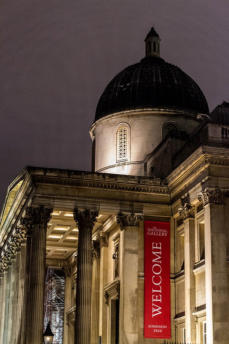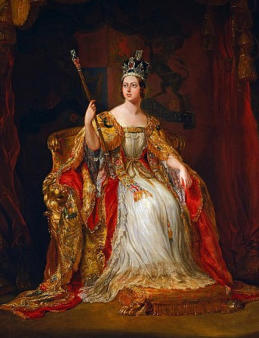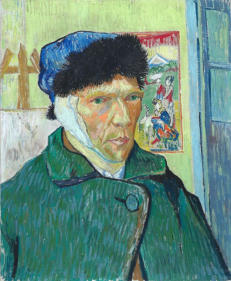The Arts Society Rutland

Meetings take place at the Raven in Corby, 63 Rockingham Road, NN17 1AG
at 11am please be seated before then.
Coffee will be available from 10.15 with Hugh the Membership Secretary ready at the
desk to welcome you as you come in and register.
Members wishing to bring a guest, at a fee of £10, should contact Hugh Henderson
0797 1643 177 or hugh.h23.@icloud.com
****************
18 April
Sophie Matthews
Music in Art
So many of our historical references for musical instruments
can be found in works of art. Not only can these windows into
the past show us what the instruments looked like but also the
social context in which they would have been played.
Music and different instruments also play a strong role within
symbolism in art.
Sophie explores the instruments in selected works and then
gives live demonstrations on replicas of the instruments
depicted.
Sophie Matthews
16 May
David Winpenny
Coronation : Majesty, Myth and Music. The Development of a National Ritual
From King Edgar in 973 to Queen Elizabeth II in 1953, the coronation ceremonies of
successive monarchs have been both bastions of tradition and prime examples of
adaptation to new needs and circumstances.
This talk looks at the development of the ceremonies,
their purpose, and the myths that surround the public
recognition and crowning of a monarch. The associated
regalia – crowns, sceptres and orbs, and also the more
obscure items such as armills and buskins – developed
as part of the coronation ceremonies over the years,
and their use (and misuse) is considered.
One of the most important aspects of a coronation has
always been music, from plainchant, through the
compositions of composers like Byrd, Purcell, Handel,
Stanford and Parry to the works written for the current
Queen’s crowning. The talk will examine what makes a
good ceremonial piece, the texts that were set and will
include audio examples.
There will also be answers to some interesting
questions, including: What did Elgar say about the
speed of the National Anthem? How did the youngest
chorister obey a call of nature in 1953 – and where did peers keep their sandwiches
during the ceremony? How did the Archbishop injure Queen Victoria? And who
occupied the 'Loose Box' in the Abbey in 1902?
Portrait of Queen Victoria in her coronation robes by George Hayter. Wikidata
20 June
Christopher Garibaldi
George Stubbs
(1724 - 1806) 'The English Leonardo'
Many art historians and critics have compared the work of
Stubbs to that of Leonardo da Vinci, one even christening
him the ‘Leonardo of Liverpool’ to reflect his humble origins
as the son of a Liverpool leather worker. The comparison can
seem hubristic until one considers the intense scientific
method and investigation that lay behind the production by
Stubbs of his world-famous Anatomy of the Horse published
in 1766 – a work which revolutionised the understanding
and depiction of equine subjects.
This lecture looks at the life and work of this country’s
greatest animal painter, putting Stubbs in the context of
British sporting artists of the eighteenth century more
generally. It focusses on his depiction of equestrian subjects
such as the National Gallery’s Whistlejacket but also looks at
the broader themes he addressed.
Whistlejacket, George Stubbs (1724–1806) 1762 wikidata:Q381728
There are no lectures in July or August
19 September
Sian Walters
Behind the Scenes at the National Gallery
In 2024 the National Gallery celebrates its 200th birthday. In the run up to this special
anniversary, join me as I explore some of the nation’s best-loved paintings in a new
light, revealing details which cannot be seen with the naked eye and discussing what
goes on behind the scenes in the conservation, framing and scientific departments. The
lecture will result in a greater understanding of not only the art itself, but also of the
work the National Gallery does to care for it, present it and interpret it.
Few of the gallery’s works retain their original frames but an expert team will often
source and adapt examples which complement the paintings historically, or indeed
hand-carve new ones from scratch. We will also look at the
technical challenges involved in hanging, displaying, moving and
framing the collection and the various solutions devised by the Art
Handling Team. Many of the paintings in the gallery were
designed for a very specific function, an altarpiece such as Piero’s
Baptism of Christ for example, so how do the curators allow us to
interpret and view these within a museum context? Finally, we’ll
talk about restoration and conservation, exploring extraordinary
details from works such as the Wilton Diptych, which have only
been discovered recently thanks to scientific analysis.
Join me on a journey of discovery as we explore the hidden
secrets of masterpieces by Bellini, Leonardo, van Eyck and many
more.
I have been a lecturer at the National Gallery for nearly 20 years.
National Gallery, London at night. Photo; MrsEllacott.
Creative Commons Attribution-Share Alike 3.0
17 October
Rosamund Bartlett
The Culture of Ukraine
This lecture tells Ukraine's story through the shared culture which binds its proud
people together. We will explore the sacred art and architecture of Kyiv and its links to
Byzantium, as well as the distinctive characters and ethnicities of Odesa and Lviv.
Tracing Ukraine's complicated multi-ethnic history also means looking at its rich folk
culture traditions. These range from native song and the secret codes embedded in
ancient embroidery, which have exerted a surprising impact on modern painting and
contemporary haute couture, to Cossack dancing and borshch.
21 November 2024
Marissa Beekenkamp-Wladimiroff
Van Gogh’s 444 days in Provence
To celebrate the bicentenary of the establishment of the National Gallery in London a
huge Van Gogh exhibition is planned for 2024! The show
will focus on the artist’s period in Provence where he
painted some of his most recognisable paintings.
Known as his brightest and most expressive paintings,
this is also the period in which he became ill and cut off
his ear. We will look at his own personal struggles and
ambitions, the art that influenced him and the art he
wanted to make.
Despite his time in Provence only lasting about a year
and Vincent not finding the support or recognition he was
craving, the paintings he created in the South of France
would turn out to become some of the most influential,
recognisable and loved paintings ever made by an artist.
Vincent van Gogh - Self-portrait with bandaged ear (1889, Courtauld Institute) Wikimedia
There is no meeting in December
The new membership starts 1st January 2025
Web site and mobile phone pages created and maintained
by Janet Groome, Handshake Computer Training
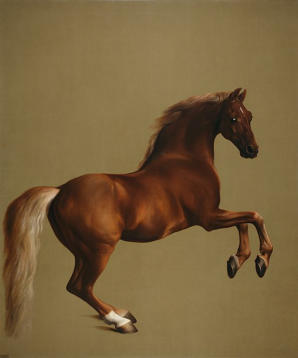
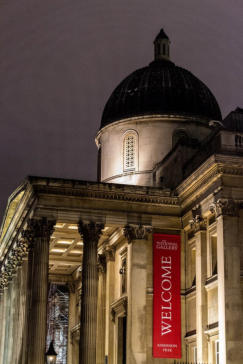

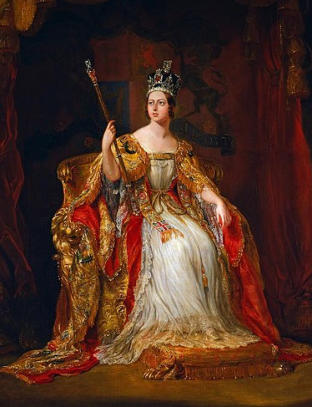
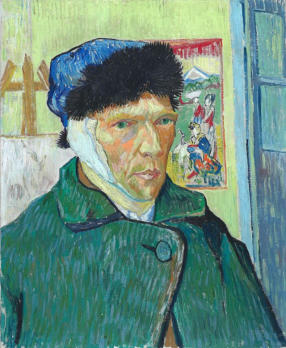
Web site and mobile phone pages designed, created and
maintained by Janet Groome Handshake Computer Training
Meetings take place at the Raven in Corby, 63
Rockingham Road, NN17 1AG at 11am please
be seated before then.
Coffee will be available from 10.15 with Hugh
the Membership Secretary ready at the desk
to welcome you as you come in and register.
Members wishing to bring a guest, at a fee of
£10, should contact Hugh Henderson 0797
1643 177 or hugh.h23.@icloud.com
****************
18 April
Sophie Matthews
Music in Art
So many of our
historical references
for musical
instruments can be
found in works of art.
Not only can these
windows into the past
show us what the
instruments looked
like but also the social
context in which they
would have been
played.
Music and different instruments also play a
strong role within symbolism in art.
Sophie explores the instruments in selected
works and then gives live demonstrations on
replicas of the instruments depicted.
Sophie Matthews
16 May
David Winpenny
Coronation : Majesty, Myth and Music.
The Development of a National Ritual
From King Edgar in 973 to Queen Elizabeth II
in 1953, the coronation ceremonies of
successive monarchs have been both
bastions of tradition and prime examples of
adaptation to new needs and circumstances.
This talk looks at
the development of
the ceremonies,
their purpose, and
the myths that
surround the public
recognition and
crowning of a
monarch. The
associated regalia –
crowns, sceptres
and orbs, and also
the more obscure
items such as
armills and buskins
– developed as part
of the coronation ceremonies over the years,
and their use (and misuse) is considered.
One of the most important aspects of a
coronation has always been music, from
plainchant, through the compositions of
composers like Byrd, Purcell, Handel,
Stanford and Parry to the works written for
the current Queen’s crowning. The talk will
examine what makes a good ceremonial
piece, the texts that were set and will include
audio examples.
There will also be answers to some
interesting questions, including: What did
Elgar say about the speed of the National
Anthem? How did the youngest chorister
obey a call of nature in 1953 – and where did
peers keep their sandwiches during the
ceremony? How did the Archbishop injure
Queen Victoria? And who occupied the 'Loose
Box' in the Abbey in 1902?
Portrait of Queen Victoria in her coronation robes
by George Hayter. Wikidata
20 June
Christopher Garibaldi
George Stubbs
(1724 - 1806) 'The English Leonardo'
Many art historians and critics have
compared the work of Stubbs to that of
Leonardo da Vinci, one even christening him
the ‘Leonardo of Liverpool’ to reflect his
humble origins as the son of a Liverpool
leather worker. The comparison can seem
hubristic until
one considers
the intense
scientific
method and
investigation
that lay behind
the production
by Stubbs of his
world-famous
Anatomy of the
Horse published
in 1766 – a
work which
revolutionised
the
understanding
and depiction of equine subjects.
This lecture looks at the life and work of this
country’s greatest animal painter, putting
Stubbs in the context of British sporting
artists of the eighteenth century more
generally. It focusses on his depiction of
equestrian subjects such as the National
Gallery’s Whistlejacket but also looks at the
broader themes he addressed.
Whistlejacket, George Stubbs (1724–1806)
1762 wikidata:Q381728
There are no lectures in July or August
19 September
Sian Walters
Behind the Scenes at the National
Gallery
In 2024 the National Gallery celebrates its
200th birthday. In the run up to this special
anniversary, join me as I explore some of the
nation’s best-loved paintings in a new light,
revealing details which cannot be seen with
the naked eye and discussing what goes on
behind the scenes in the conservation,
framing and scientific departments. The
lecture will result in a greater understanding
of not only the art itself, but also of the work
the National Gallery does to care for it,
present it and interpret it.
Few of the gallery’s
works retain their
original frames but an
expert team will often
source and adapt
examples which
complement the
paintings historically,
or indeed hand-carve
new ones from scratch.
We will also look at the
technical challenges
involved in hanging,
displaying, moving and
framing the collection
and the various
solutions devised by the Art Handling Team.
Many of the paintings in the gallery were
designed for a very specific function, an
altarpiece such as Piero’s Baptism of Christ
for example, so how do the curators allow us
to interpret and view these within a museum
context? Finally, we’ll talk about restoration
and conservation, exploring extraordinary
details from works such as the Wilton
Diptych, which have only been discovered
recently thanks to scientific analysis.
Join me on a journey of discovery as we
explore the hidden secrets of masterpieces
by Bellini, Leonardo, van Eyck and many
more.
I have been a lecturer at the National Gallery
for nearly 20 years.
National Gallery, London at night. Photo;
MrsEllacott.
Creative Commons Attribution-Share Alike 3.0
17 October
Rosamund Bartlett
The Culture of Ukraine
This lecture tells Ukraine's story through the
shared culture which binds its proud people
together. We will explore the sacred art and
architecture of Kyiv and its links to
Byzantium, as well as the distinctive
characters and ethnicities of Odesa and Lviv.
Tracing Ukraine's complicated multi-ethnic
history also means looking at its rich folk
culture traditions. These range from native
song and the secret codes embedded in
ancient embroidery, which have exerted a
surprising impact on modern painting and
contemporary haute couture, to Cossack
dancing and borshch.
21 November 2024
Marissa Beekenkamp-Wladimiroff
Van Gogh’s 444 days in Provence
To celebrate the bicentenary of the
establishment of the National Gallery in
London a huge Van Gogh exhibition is
planned for 2024! The show will focus on the
artist’s period in Provence where he painted
some of his most recognisable paintings.
Known as his
brightest and most
expressive paintings,
this is also the period
in which he became ill
and cut off his ear. We
will look at his own
personal struggles
and ambitions, the art
that influenced him
and the art he wanted
to make.
Despite his time in Provence only lasting
about a year and Vincent not finding the
support or recognition he was craving, the
paintings he created in the South of France
would turn out to become some of the most
influential, recognisable and loved paintings
ever made by an artist.
Vincent van Gogh - Self-portrait with bandaged ear
(1889, Courtauld Institute) Wikimedia
There is no meeting in December
The new membership starts 1st January
2025


